The Best Modeling Amps for Guitar - Combo All Under $1000
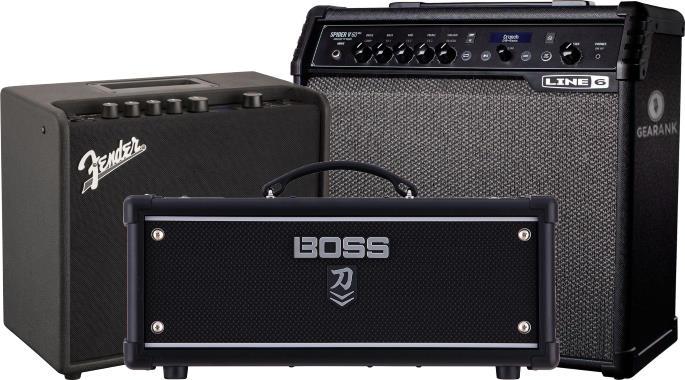
Author & Contributors
Alexander Briones
I have been writing about and researching music gear for many years, all while serving as a music director at my local church. I engage in guitar playing and singer-songwriter stints, in addition to mentoring young musicians and teaching guitar and bass.
The Best Combo Modeling Amp Under $200
Fender Mustang LT25
Cons
- High gain tones aren't that great
- Small 8" speaker
Pros
- Great low-cost practice amp
- Clean tones are very good
- Intuitive interface
- Compact and easy to carry around
While they are well known for their tube amps, Fender does not shy away from technology, developing and releasing DSP-powered amps that represent them in the entry-level market. The Mustang LT is one such amp, with 20 amp models that include emulations of iconic tube amps from Fender, along with 25 digital effects.
This is a great practice amp, with more than enough effects and amp models to cover much of old and modern musical styles. It's also easy to use and carry around, so you can practice anywhere inspiration strikes.
In particular the clean tones are really good. It's important to do some of your practice on clean settings because it helps expose timing errors whereas the heavy tones with reverb can mask problems with some parts or runs you need to improve.
The high gain tones are Ok, but when you crank the amp they can sound a bit brittle or thin. This isn't much of a problem for practice, and given it's small 8" speaker, this is not an amp for playing heavy and loud.
Other features include color display, headphone out, aux input and USB connectivity.
If you're looking for a practice amp with good balance of tone quality and sonic versatility, then check out the Fender Mustang LT 25.
Specifications
- Power Rating: 25 Watts
- Speaker: 1 x 8"
- Amp Models: 20
- Effects: 25
- Controls: Gain, Volume, Treble, Bass, Master, Preset Control Switches
- Input: 1 x 1/4", 1 x 1/8" (Aux)
- Output: 1 x 1/8" (Headphones
- Weight: 14.9 lbs.
| Website | Source | *Rating Value |
| Guitarist Next Door | Teemu Suomala | 92/100 |
| expertreviews | Darien Graham-Smith | 60/100 |
The Best Combo Modeling Amp from $200 to $300
Positive Grid Spark
Cons
- Speakers sound 'muddy' for electric guitar sounds in particular
- Requires Mobile/Tablet for detailed control. No Desktop Software
- Ads for expansion pack in the controls
- Gets so much right that it leaves you wanting even more
Pros
- Great wireless mobile app integration that 'just works'
- Good collection of Amp and Effect Models
- Compact 'Boutique Amp' looks suitable for the home
- Versatility - Stereo Guitar, Bass and Acoustic Amp as well as Bluetooth Speakers
- Excellent Practice Options
Positive Grid have taken software and hardware integration to another level with the Spark 40 producing a compact amp that's crazy versatile and a system that 'just works' for home practice use. The the amp is pitched toward home practice for electric guitar, bass guitar and acoustic guitar which is a lot to pack into one unit. If that's not enough it's also a pretty capable bluetooth speaker as well.
There are over 30 amp models to chose from and these can be combined with over 40 pedal effects. To control all this you need to use Positive Grid's "Spark Amp" app via bluetooth which is available on the Android and IOS app stores. The app really does offer a smooth and polished experience that 'just works' while offering a ton of useful options at your fingertips.
Positive Grid where previously known for their excellent 'BIAS' software modelling apps and that experience shines through here. The amps and effect models are quite good but the sound is hampered by the speakers sounding too bass heavy which often leads to a 'muddy' tone by default. There are ways to address this but it's a hassle to have to deal with. Not everyone find this a problem but many do including myself so be warned.

The Spark 40 on a table. Ideally it should be closer to the edge to reduce low frequency build up
The Spark 40 aims for the look and feel of a small boutique amp and they've done a pretty job at making it home friendly as possible. You still have your classic amp control knobs for gain, Hi/Mid/Low and Master volume plus Mod Level, Delay and Reverb and you can store 4 patches in the unit.

One of the highlights of the package are the features that allow you to play along with practically any song on YouTube with chords automatically detected and shown. There's also a 'Smart Jam' feature where you can play a short chord progression and it will add a bass and drum accompaniment as well as generic track for you to Jam with. This doesn't always produce great results but it can be handy.
If you're looking for a home friendly amp with a ton of sounds and practice options literally at your fingertips via the app then this is a great choice.
Specifications
- Power Rating: 40 Watt Class D
- Speaker: 2 x 4"
- Amp Models: 30 Amp Models
- Effects: 40 Effects (Noise Gate, Compressor, Distortion, Modulation, Delay, Reverb)
- Controls: Amp Type, Gain, Bass, Mid, Treble, Master, Mod, Delay, Reverb, Output Volume, Music Volume, Four Programmable Preset Buttons, Tap/Tuner Button
- Input: 1 x 1/4", 1 x 1/8" Aux
- Output: 1/8" Headphones
- Extra Features: Bluetooth Streaming, USB Audio Recording, Smart Jam (Auto-Accompaniment), Auto Chords
- Weight: 11.46 lbs.
| Website | Source | *Rating Value |
| Gearank | Daniel Barnett | 85/100 |
| Wired | Parker Hall | 80/100 |
| Guitar World | Rob Laing | 100/100 |
The Best Combo Modeling Amp from $300 to $500
Boss Katana Head MkII - 100 Watt Combo & Amp Head
Cons
- Software editor is a bit tiresome
- Limited number of amp models
Pros
- Great sounding high-gain tones
- Good quality amp model selection
- Versatile power attenuation from 100W down to 0.5W
- Can double as a bedroom amp with built-in 5" speaker
Instead going for quantity, the Katana Head MkII limits its number of amp models to just 10. And this limitation has proven to be a sensible choice, Boss was able to focus on fewer amp models that actually matter, making them sound substantially better than the average amp modeler.
The Katana series started with just 5 amp models, Clean, Crunch, Lead, Brown and Acoustic. The MkII version expands it with a "Variation" button, which provides a modified version of the original, expanding the total voicings to 10. More importantly, all these amp models sound good, no fluff or useless models among them.
The Katana series initially made waves for its impressive Lead and Brown mode high-gain tones. The MkII further establishes this reputation with nice saturation, tight response and heavy bass that fits modern metal nicely. The Crunch mode is quite good for an attempt at mid-gain tone, but it's a bit too refined sounding, which is contrary to the more open vintage tones you'd expect from mid-gain style amps. The Clean and Acoustic channel does the job really well, but not as bright as old school amps, which can be good or bad depending on your preference.
Another important feature of the amp is its built-in power attenuator, which lets you lower the power rating from 100W to 50W, and all the way down to 0.5W. And it even comes with an internal 5" speaker which you can use at the lowest power setting, turning this loud amp into an instant bedroom practice amp. This is a big deal, because it not only ups the functionality of the amp, it also crosses over between being an amp head, and a combo amp. For me, this is what makes the Katana Head MkII an incredibly good deal.
And since this amp is made by Boss, it has very good quality effects built into the amp, which again expands your sonic palette without compromising tone.
Other features to note include having multiple boost types, a power amp input, and an effects loop, making this a truly stage ready and pedalboard friendly amplifier. It also has a software editor which opens up the amp for deeper parameter tweaking, but it takes a bit of time to get used to.
If you're looking for a true all-in-one amp head that you can use in your bedroom and on stage, then get the Boss Katana Head MkII.
Specifications
- Power: 100W (Power Attenuator: 50W, 0.5W)
- Amp Models: 10
- Effects: 60 Boss Effects
- Controls: Amp Type, Gain, Volume, 3-Band EQ, Booster/Mod, FX/Delay, Reverb, Presence, Master, Power Control, Variation, Cab Resonance, User Preset
- Input: 1 x 1/4, 1 x 1/4" (Power Amp), 1 x 1/8" (Aux)
- Outputs: 2 x 1/4" (Line/Speaker), 1 x 1/4" (Headphones/Rec)
- Weight: 19.4 lbs.
| Website | Source | *Rating Value |
| YouTube | Guitar Interactive Magazine | 100/100 |
| YouTube | Taylor Danley | 96/100 |
The Best Combo Modeling Amp from $500 to $1000
Line 6 Spider V 240 MkII
Cons
- Learning curve is steep
- Sounds too polished, lacks musical nuance
Pros
- Wide selection of amp model and effects
- Loud and reliable workhorse stage amp
- Switchable built-in tweeter
- Great value amp
With its 240 Watts of power and dual 12" speakers, the Spider V 240 MkII packs Line 6's amp modeling technology into a combo amp that's meant to be loud. It has more than enough volume to fill most stages and venues, while retaining the versatile DSP functionality of the Spider V line.
It comes with the same amp modeling selection that's found in other Spider V amps, letting you choose from a total of 78 amp models, 24 cabinet simulations and 4 mics. You also have to consider its built-in effects, which allow for over 100 options, expanding your tone palette even further.
That's a lot of tone options, and this is really what the Spider line is known for. Quality wise, the amp models sound OK, but they can actually sound better, with a bit more tweaking and use of the software controller. Unfortunately, not everyone has the patience for tweaking, hence the Spider series infamy for average sounding default presets. So if you're not into tweaking and diving deep into controls, then this might not be for you.
Once tweaked, the Spider V 240 MkII has a polished sound that can be saved and loaded up instantly as you please. I particularly like its clean sound presets, and its id to high-gain tones. Combined with its big speakers, this makes it a true all-in-one rig that covers a lot of genres. On the flipside, the presets can sound too polished, to the point that it misses on some nuance that makes guitar tones sound musical. Still, "processed" tones can get the job done consistently night after night, without having to deal with the sonic limitations, maintenance needs and sensitivities of a tube amp. And in live situations, most of the musical nuances of great sounding amps are usually drowned out by the band anyway. This amp is really not meant to replacement for great sounding amps, rather it is meant to be a convenient and reliable all-in-one workshorse amp.
This amp also houses two tweeters for fuller higher frequencies, which ups the realism of the modeled amp sounds. This for me is what separates the Spider V240 MkII from conventional amps. The downside to this setup is that your tone sounds more like sampled tracks than coming from an amp. So for those who aren't fans of the tweeters, Line 6 added a Classic Speaker mode where the tweeter is turned off, along with cabinet and mic emulation. This allows for more traditional amp feel and simpler setup.
Speaking of setup, getting familiar with the controls and the overall functions of the amp will take a while. This is not a plug-and-play amp. Having a built-in power attenuator would've added even more value to this amp. Without one, this loud amp is limited to stage and big venue use.
If you're looking for a reliable and loud amp that stays within reasonable budget, then check out the Line 6 Spider V 240 MkII.
Specifications
- Power Rating: 240 Watts
- Speaker: 2 x 12" Woofer, 2 x Tweeter
- Amp Models: 78 x Amps, 24 x Cabs, 4 x Mics
- Effects: 100+ Digital Effects
- Controls: Drive, 3-Band EQ, Volume, Comp, Fx1, Fx2, Fx3, Reverb, Master, Preset
- Input: 1 x 1/4", 1 x 1/8" (Aux in)
- Output: 1 x 1/4" (Headphones), 1 x XLR (Right, L/Mono)
- Extra Features: Classic Speaker Mode (Turns off Cab modeling and Tweeter), Built-in Tuner, Metronome, Looper, and Drum Loops
- Weight: 42.9 lbs.
| Website | Source | *Rating Value |
| YouTube | SpectreSoundStudios | 90/100 |
| Guitar Gear Finder | Aaron Matthies | 80/100 |
Things to Consider When Buying a Modeling Amp
-
Most modeling amplifiers have solid state components, they are generally regarded to be more affordable, reliable and since they have fewer moving parts, they also requires less maintenance. Some modeling amps feature tube components, and they are often called hybrid amps - since they combine digital processing with genuine tube components. This Type of Amp combines the warmth of a tube preamp, with the reliability and consistency of a solid state power amp. While tube can be fragile and somewhat noisy, they are still preferred by many for their improved tone, feel and sonic detail. Some manufacturers have found a way to vary amp voicing without the use of digital processing, allowing the proliferation of tube amps with analog-based modeling capabilities, however they will not have the same convenience and variety as their digital counterparts.
-
Most modeling amps offer straightforward digital operation, where switching between models are done via buttons or switches. These days, some manufacturers have gone the analog route, opting for a more fluid way of changing the voicing via analog knobs and controls. Some manufacturers have stepped up their technology by doing component modeling, which lets you mix and match virtual components like preamp/poweramp to your preference. While it can be tempting to get one with the most number of amp models, more is not always better, especially since you won't normally be using more than 5 amp models in one performance.
-
Not all manufacturers follow a specific power rating standard, but the power rating of an amplifier gives you a good idea of how loud it can go. The speaker size also helps in the loudness department, but more than that, it dictates bass definition and clarity. Wider speakers are usually preferred for their extra bass response, but there are many circumstances where smaller speakers and lower power ratings are preferred, specifically for room practice and when portability is your priority.
-
Those who want to get the most out of their money will prefer amps with built-in effects. They allow you to practice and jam without the need to setup effect pedals separately. Don't expect much in terms of quality and control over these built-in effects though, but they can get the job done. Essential effects to look out for include reverb and delay.
-
Generally speaking, the more complex and versatile an amplifier is, the steeper the learning curve. This is especially true of analog modeling amps where you have to tweak knobs to get the different amp voicings. If you are patient and want a more personalized tone, you'll appreciate deep controls better, but if you just want a plug-and-play amp with some versatility then you're better off with regular digital amp modeling.
-
Because of limited space on the amp for controls, some manufacturers opt to add extra control options in software editors. And for this reason, familiarizing yourself with software editor becomes essential if you want to make full use of your modeling amp. This can be good or bad, depending on how much control over the sound you want and how you prefer to control your amp settings. Generally speaking, the more features there are, the more complex the software editor will be. So if you're looking for a more plug-and-play amp, then you might want to consider those that have the sound you prefer but with fewer options.
-
Having the ability to connect to a PA system via DI out is a nice plus, especially if you're looking to use your amp on stage. USB connectivity is another important feature, as it allows for easy recording and removes the need for amp miking or for an audio-interface. Those who want to practice quietly with their favorite tracks should look for headphones out and aux in ports. Interestingly, there are now Bluetooth compatible amps on the market, which allows for convenient wireless playback of your favorite tracks, and some even allow for software editors to work without needing to be tethered to your amp.
-
There's no point in buying a full featured modeling amplifier that ends up gathering dust in your room because you're tired of hauling it around. So you'll have to balance features over portability, get one that is reasonably light considering your needs, while having enough volume and the features that you really need. For this reason, we've included the weight of all the amplifiers in the list.
For specific recommendations on the best guitar amps under 500 you should check out our article.
Solidstate vs Tube
Amp Models
Power Rating and Speaker Size
Built-in Effects
Learning Curve
Software Editor
Connectivity
Portability
Best Modeling Amp Selection Methodology
The first edition was published in 2017.
We started off by short-listing 37 popular modeling combo amps and heads that you can readily buy from major US retailers. We then collected and analyzed over 27,600 relevant reviews, ratings and expert recommendations, including the most recent ones. The resulting data were then processed using the Gearank Algorithm which gave us the rating scores our of 100 that represent market sentiment for each amp. We then recommended the highest rated in each of the 4 price brackets above. For more information about our methods see How Gearank Works.
About the Author and Contributors
Here are the key people and sources involved in this guide's production - click on linked names for information about their music industry backgrounds.
Lead Author & Researcher
Alexander Briones
I have been writing about and researching music gear for many years, all while serving as a music director at my local church. I engage in guitar playing and singer-songwriter stints, in addition to mentoring young musicians and teaching guitar and bass.
I consider myself a tone connoisseur - given the chance, I'd play on a good tube amp any day. But I'm also practical, I prefer the portability and reliability of amp modelers and guitar processors. My son currently has a Fender Mustang II amp, which I also practice on from time to time. While the tone is not anything to write home about, it does sound good and gets the job done.
Contributors
Daniel Barnett: Positive Grid Spark Review.
Jason Horton: Editing and Illustrating.
Media
Main/Top Image: Produced by Gearank.com using photographs of the Fender Mustang LT25, Boss Katana Head MkII and Line 6 Spider V 60 MkII.
The videos have been embedded in accordance with YouTube's Terms of Service.
The individual product images were sourced from websites, promotional materials or supporting documentation provided by their respective manufacturers except for the Spark on Table and Spark App pictures which were taken by Daniel Barnett.



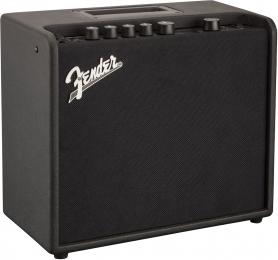
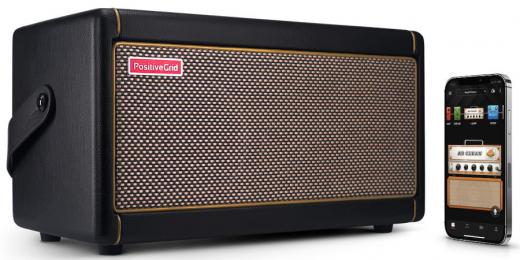
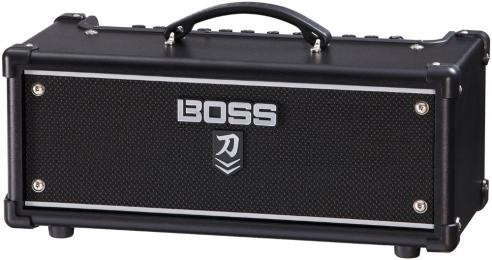
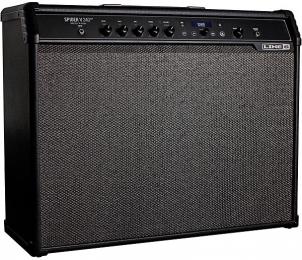
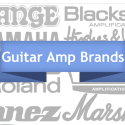 The Best Guitar Amp from the Top 10 Guitar Amp Brands
The Best Guitar Amp from the Top 10 Guitar Amp Brands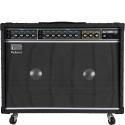
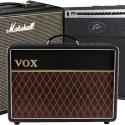
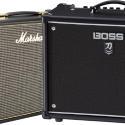
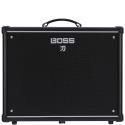
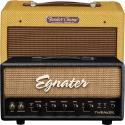 The Best Small / Low Watt Tube Amps - Combo & Amp Heads
The Best Small / Low Watt Tube Amps - Combo & Amp Heads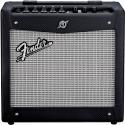
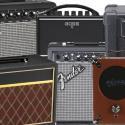
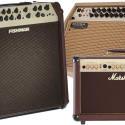
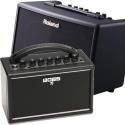
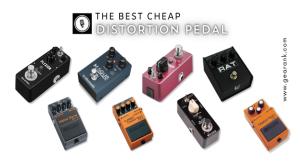
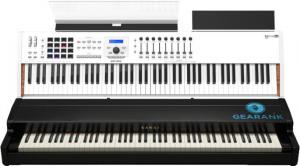
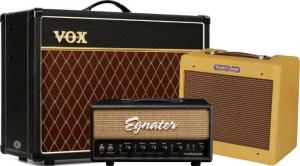
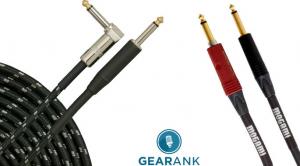
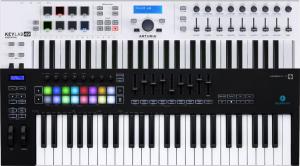
Comments
The following amps came off
Submitted by Jason Horton on
The following amps came off the recommended list above when we published the August 2022 Edition:
We've removed the following
Submitted by Jason Horton on
We've removed the following amp heads due to them being discontinued, but you can still see our analysis of them:
We've removed the Roland
Submitted by Jason Horton on
We've removed the Roland Micro Cube GX due to it being discontinued.
Publication of our June 2021
Submitted by Jason Horton on
Publication of our June 2021 Edition resulted in the following amps coming off the recommended list above, but you can still see our analysis of them:
The Line 6 DT25 has been
Submitted by Jason Horton on
The Line 6 DT25 has been removed from the recommended list above due to being discontinued.
The following amps came off
Submitted by Jason Horton on
The following amps came off the recommended list above as part of our August 2020 update, but you can still see our analysis of them:
They should put the Line 6
Submitted by Marco (not verified) on
They should put the Line 6 Spider V 240HC back on the recommended list as it was replaced by the Line 6 Spider V 240HC MKII which is the same amp that was updated with new firmware features that also improved the sound. It is the best Head amp of the bunch.
We've removed the following
Submitted by Jason Horton on
We've removed the following amps from the recommended list above due to being discontinued, but you can still read our analysis of them:
The Line 6 amp is not a
Submitted by Luca (not verified) on
The Line 6 amp is not a modeling amp in any way.
There are currently 2 Line 6
Submitted by Jason Horton on
There are currently 2 Line 6 amps listed above.
The Spider Jam has 12 amp models and the DT25-112 which has 4 'voicings' - both amps do this using Line 6's HD modeling technology from their POD HD.
We have removed one of the
Submitted by Jason Horton on
We have removed one of the amps from our recommended list due to a lack of availability but you can still read about it: Blackstar HT Stage 60.